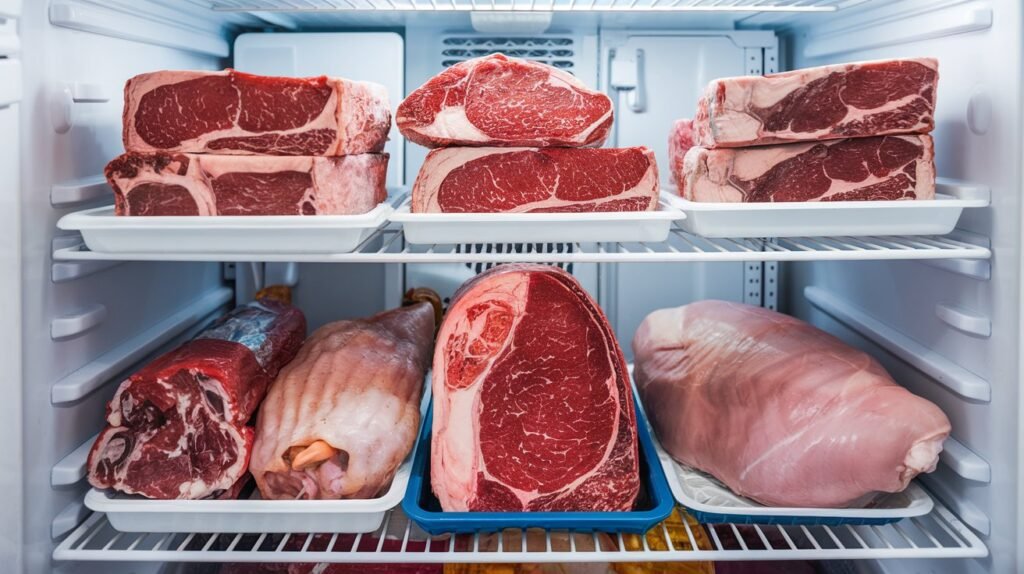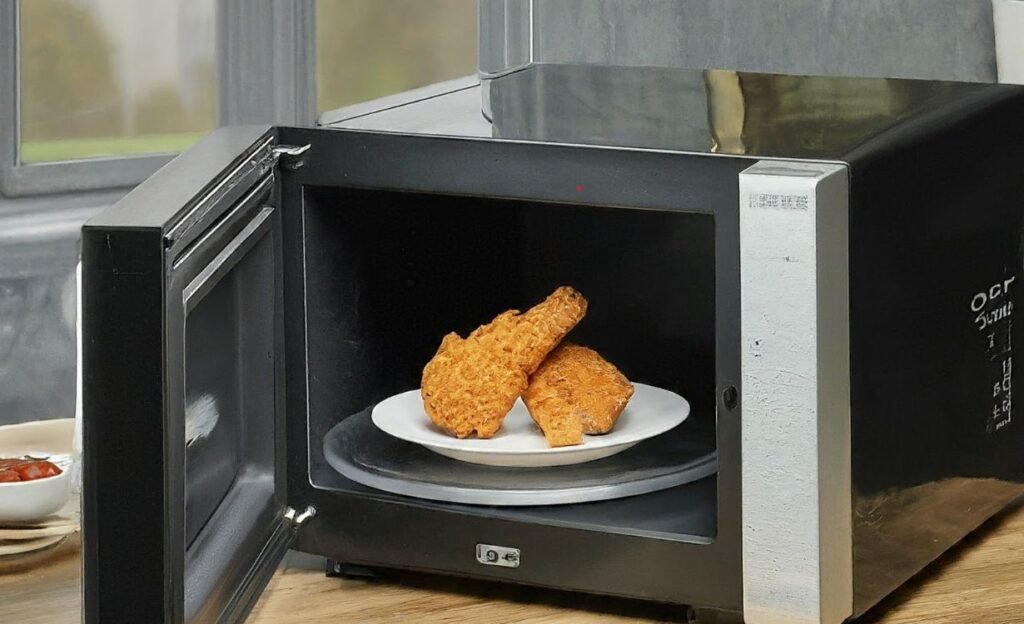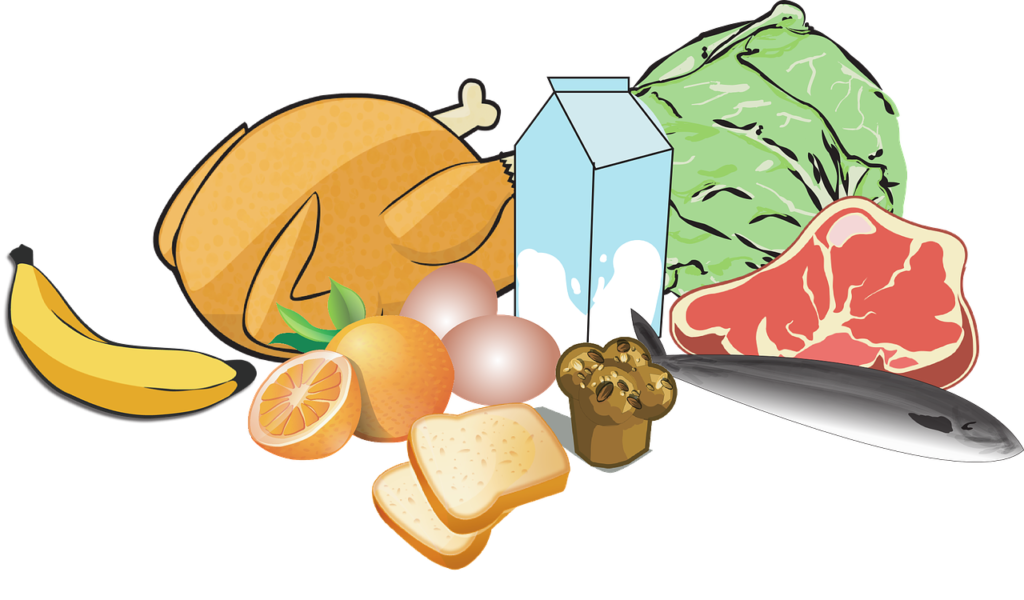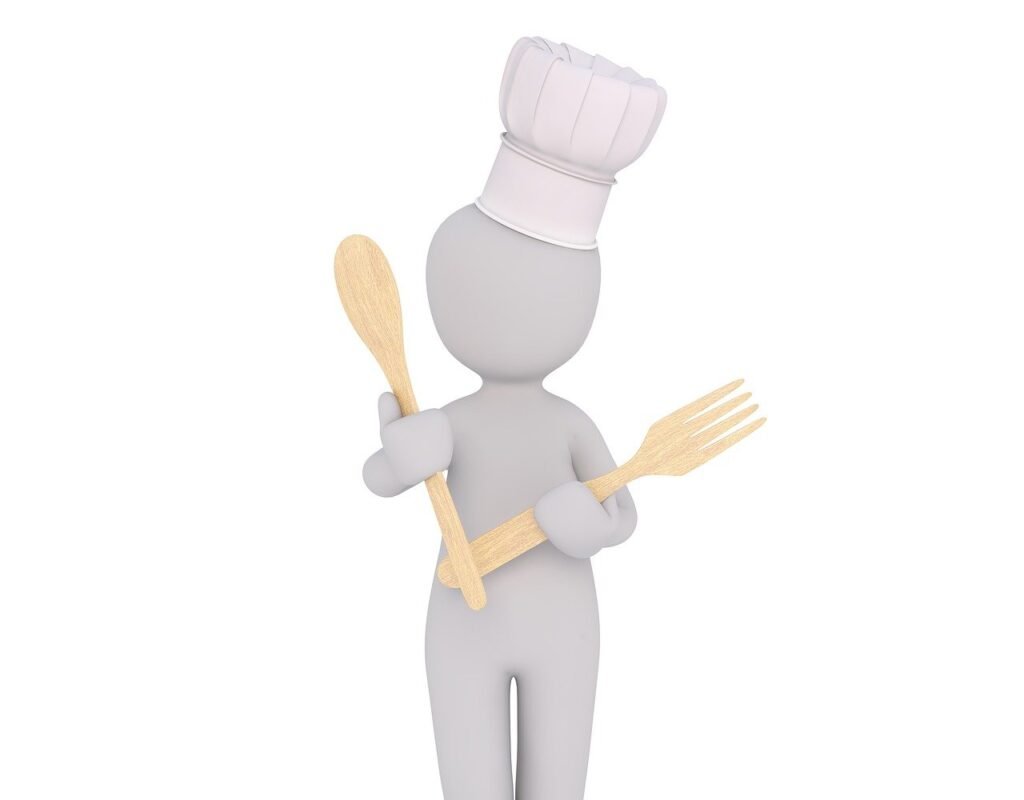For everyone who is dealing with food, Understanding TCS food thawing methods is a life-saver.
When it comes to food safety, the way we thaw food often goes overlooked.
As someone who’s worked as a food safety auditor for years, I’ve seen it all, frozen meat thawing in buckets on the counter, seafood sitting out all day, and even some creative microwaving techniques that would give health inspectors chills!
Let’s break down what TCS (Time/Temperature Control for Safety) foods are
Why proper thawing is crucial,
And the best TCS food thawing methods that the FDA, USDA, and WHO recommend to keep these foods safe.
Understanding TCS Foods and their Risks
TCS foods are products that require time and temperature control to remain safe for consumption.
Think of meats, poultry, eggs, dairy, seafood, and certain produce.
These items are nutrient-dense and moist, creating a perfect breeding ground for bacteria if they aren’t stored, handled, and thawed properly.
I can’t count the number of times I’ve seen TCS foods left out to thaw at room temperature.
A common practice that unfortunately allows bacteria to grow rapidly as food hits the “temperature danger zone,” which is between 41°F (5°C) and 135°F (57°C).
Why Proper Thawing Matters for TCS Foods?
Improper thawing for food is considered a certain danger.
Especially for TCS foods, due to their specific nature.
As they contain higher nutrition values for the bacteria and also their water content is higher.
Imagine that you are providing harmful bacteria like salmonella, E. coli, and Listeria the ideal conditions for multiplication.
Then the chance of causing harmful effect and foodborne illnesses will be increased too.
Moreover, for food business owners, who are welling to gain a better reputation, they need to gain customer satisfaction.
This will not be achieved if the customer is not feeling safe.
4 Approved TCS Food Thawing Methods
These methods aren’t just recommended. they’re approved by leading food safety authorities like the FDA and USDA.
Here’s how each one works and why it’s essential for food safety.
1. Refrigeration Thawing

It should be our first choice for thawing TCS foods.
This is the gold standard for thawing TCS foods because it keeps food well below the 41°F (5°C) threshold, preventing bacterial growth.
How It Works?
Place the frozen food in a refrigerator set at or below 40°F (4°C) and let it thaw slowly.
And for business owners, dedicating a separate refrigerator for food thawing will help.
For example, it might take 24 hours to thaw a 5-pound roast, so planning is key.
You can plan for your next day’s food needs and start removing these foods from the freezer to be thawed properly.
Why It’s Safe?
By maintaining a constant safe temperature, refrigeration thawing minimizes bacterial growth.
Using this method, it is granted that bacteria will not find their ideal temperature to grow.
If you’re running a busy kitchen, setting aside space in your cooler for thawing foods can save a lot of headaches.
Pros and Cons:
This method is the safest, but it does require planning.
It is challenging if you have lots of frozen items to handle daily, so having a thawing schedule can help.
2. Cold Water Thawing

Cold water thawing is faster than refrigeration and useful when you’re short on time but still want to keep food out of the danger zone.
How It Works?
Place the food in a leak-proof plastic bag (to prevent cross-contamination), then submerge it in cold water.
Change the water every 30 minutes to keep it cold, as the water temperature can rise and cause bacterial growth otherwise.
Why It’s Safe?
The constant changing of cold water keeps the temperature low enough to slow bacterial growth.
The USDA and WHO support this method as safe for thawing in one condition:
Just do it right and monitor the water temperature.
Limitations
This method requires monitoring, so it’s best suited for small portions of food or when you’re thawing last-minute items.
I remember once, when we were seeking towards having the ISO 24000 certificate for our company.
The ISO auditor recorded an NCR when inspecting the food preparation area inside our kitchen because one of the food handlers was thawing the meat on the shelf.
3. Microwave Thawing

Microwave thawing can work well for small portions of food that will be cooked immediately afterward.
How It Works?
Place your food in a microwave-safe container and use the defrost setting to thaw it evenly.
Avoid thawing large items.
Microwaves can lead to uneven thawing, resulting in bacteria-laden spots in the food.
Limitations
Immediate cooking is required. parts of the food may start cooking, bringing it into the danger zone.
This is an FDA-recommended method for quick thawing but only when food will be cooked immediately. Read the chill section in this small document.
For example, smaller portions of vegetables or cuts of meat can be thawed in the microwave.
4. Cooking from Frozen
Cooking directly from frozen is another safe option, especially for foods like pre-cooked items and certain vegetables that don’t require complex thawing.
Just take the food straight from the freezer to the stove or oven.
Some adjustments to cooking times are needed, usually about 50% longer, to make sure the food reaches a safe internal temperature.
And to ensure that you food was internally cooked to the proper safe temperature, a food thermometer can help.
Why It’s Safe?
Since the food never enters the danger zone, there’s no time for bacteria to grow.
Pros and Cons
This method is proper and doesn’t require thawing space.
But not for all foods, especially large cuts of meat that need even cooking.
Common Thawing Mistakes and How to Avoid Them
When it comes to TCS food thawing methods, I’ve noticed a few recurring mistakes that can lead to serious safety risks.
Here’s what to avoid:
1. Room Temperature Thawing
Leaving food out on the counter is the quickest way to land in the danger zone.
Food sitting at room temperature can reach unsafe levels within two hours, giving bacteria plenty of time to grow.
This is especially important in commercial kitchens, where cross-contamination risks are higher.
2. Ignoring Time Limits
While cold water thawing is a safe method, ignoring the time limit can quickly cause problems.
If food isn’t thawed within a few hours in cold water, bacteria can start to grow.
This is why time tracking is essential.
3. Cross-Contamination Risks
Cross-contamination is a significant hazard during all food processing stages including thawing.
Especially with cold water thawing or microwave methods.
Always use leak-proof bags and clean, sanitized containers to keep bacteria from spreading.
Also, remember to separate raw meats from other foods in your fridge.
Tips for Safe Thawing in Food Businesses
Create a Thawing Schedule
To avoid last-minute thawing in a rush, incorporate a thawing schedule into your kitchen routine.
For instance, if you know you need certain ingredients ready for the next day, place them in the refrigerator the day before.
This small step can make a big difference in food safety and reduce stress.
If you find that your business is growing, it will be better to dedicate a separate refrigerator for thawing foods.
Train Your Staff

Thawing methods are one of the fields you need your staff to be aware of.
It’s critical to train employees on the safe thawing methods recommended by FDA, USDA, and WHO.
Employees should understand the risks of each method and follow guidelines strictly to ensure that TCS foods remain safe for customers.
And not only on business scale, even home cooks should be aware of the surrounding risks.
In a previous post, I discussed the reasons why food safety culture training is essential for everyone.
Regular Temperature Monitoring
Use thermometers to check that food is held at safe temperatures throughout the thawing process.
Even a quick check can help you catch potential hazards early.
Benefits of Following Safe TCS Food Thawing Methods
1- Enhanced Food Safety
Safe thawing reduces the risk of foodborne illness, which can lead to costly recalls or shutdowns.
2- Better Food Quality
Properly thawed food maintains better texture, flavor, and appearance, which is crucial in any food business.
3- Compliance and Reduced Liability
By following approved methods, you avoid fines and penalties, ensuring your business remains compliant with health regulations.
Conclusion:
The importance of using safe TCS food thawing methods can’t be overstated.
From protecting customer health to improving food quality, these methods are essential for any food business.
By adopting proper thawing practices, training your staff, and staying vigilant, you ensure that your kitchen remains a safe place for everyone.
Do not forget these key points:
- the best method is to keep foods in the refrigerator a day before.
- Some other methods may be faster than refrigerator thawing, but we need to their consider limitations.
- For cold water thawing, use leak-proof bags and change water regularly.
- For microwave, only thaw small cuts meat cuts and small food amounts.
- If you are going to cook foods without thawing, thermometer can help you to ensure safe internal temperature.
- It is not safe to put your food in the TDZ for more than 2 hours.
Remember, good thawing habits are just as important as good cooking habits, and with the right approach, you can make food safety an everyday priority!



